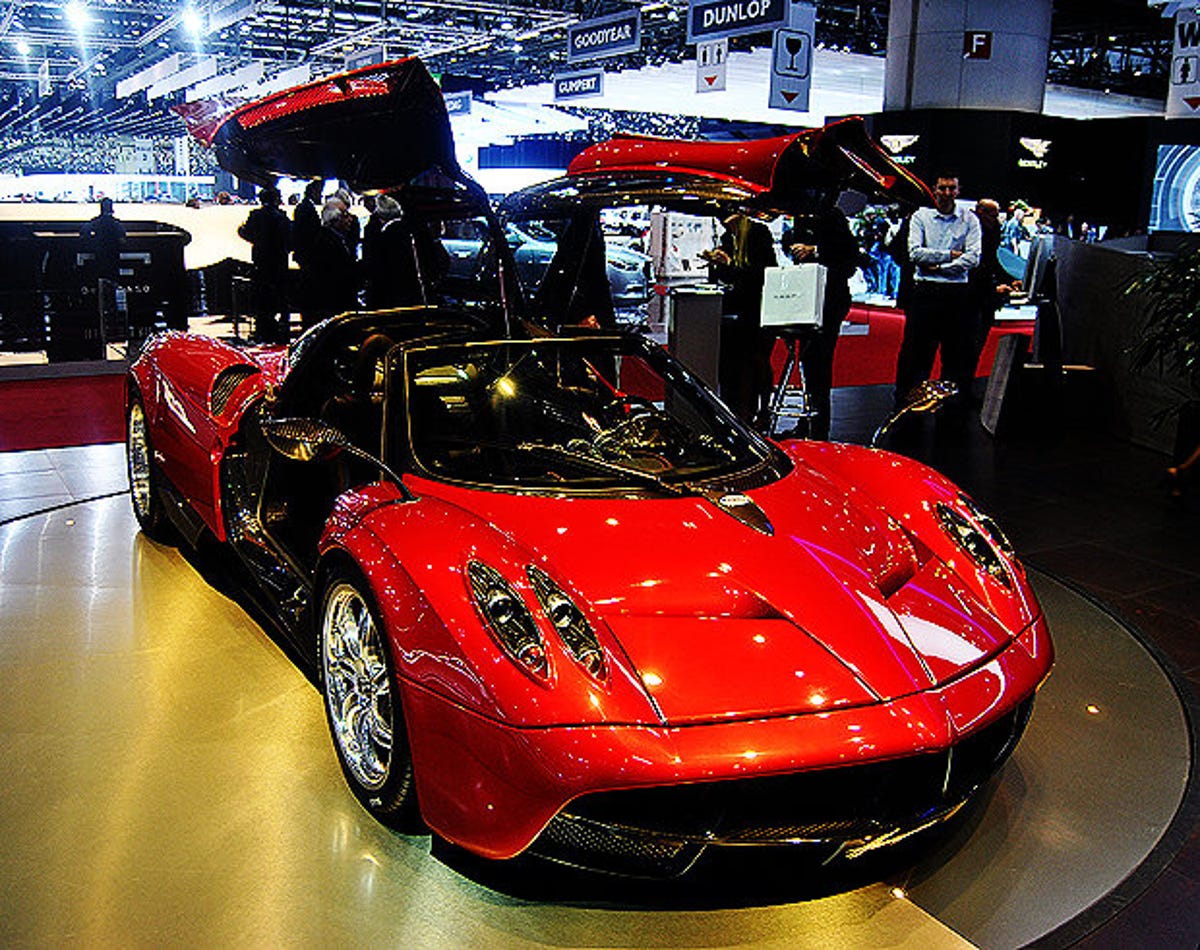Pagani Huayra photos may trigger lust, envy, overexcited prose
If you had £850,000 to spare, what kind of car would you buy? If your answer was anything other than the Pagani Huayra, you're sadly mistaken.

If you had £850,000 to spare, what kind of car would you buy? If your answer is anything other than the Pagani Huayra, you're sadly mistaken. Forget your favourite ride: Pagani's bizarrely titled successor to the Zonda is the automotive Alpha and Omega, the dog's reproductive organs.
Let's get the bad things out of the way. The Huayra has a stupid name (meaning God of wind); a stupid grille that's reminiscent of a whale shark; ugly quad headlamps and highly cliched gullwing doors. But then there are the good things -- and these vastly, irrefutably outweigh the bad.
First up, there's the incredible attention to detail. The quad exhausts, mounted square in the centre of the car's rear bumper, which appear to be an integral part of the Huayra's swooping roof; the triangle-formation rear light clusters; the leaf-shaped wing mirrors; the gold-plated engine bay; and the oodles upon bountiful oodles of designer flourishes that adorn the cabin.
We're fawning a little here, but there is no other way to speak about the Huayra. It's a car, make no mistake, but it's also a piece of art thanks to a bonnet that's secured to the bodywork, not via a latch, but by beautiful hand-stitched leather belts. Its gear-selector knob has an exposed linkage mechanism. It even has a weird protrusion in each seat whose sole function appears to be for pleasuring the bottoms of its occupants.
The Huayra is no show pony though. It's powered by a 690bhp, 6-litre, V12 engine that offers 1,000Nm of torque. Mash the beautifully ornate accelerator pedal and it'll do 0-60mph in 3.5 seconds. Keep it planted and it'll defy all that is legal, holy and in many cases possible by screaming all the way to 230mph. It will, friends, make anything that isn't a Bugatti Veyron look like it's barely moving.
We can't speak for the Huayra's handling prowess, but we'll politely suggest it can twist its way out of a straightjacket. The car's been blessed with four individual flaps -- one at each corner -- that act like those of an upside-down plane, keeping it glued to the tarmac like week-old roadkill.
The behaviour of the flaps is managed by a dedicated control unit that is fed information from the ABS braking system and the car's engine control unit. These pass information about the car's speed, yaw rate, lateral acceleration, steering angle and throttle position, all of which helps determine the angle of the flaps and their resultant downforce.
It's almost too much for our tiny minds to comprehend, but needless to say if we had anywhere near the cash, we'd skip gleefully to the nearest pawn shop to sell our kidneys, souls and grandmothers to raise the rest of the money. Have a look through the photo gallery above and tell us we're wrong.